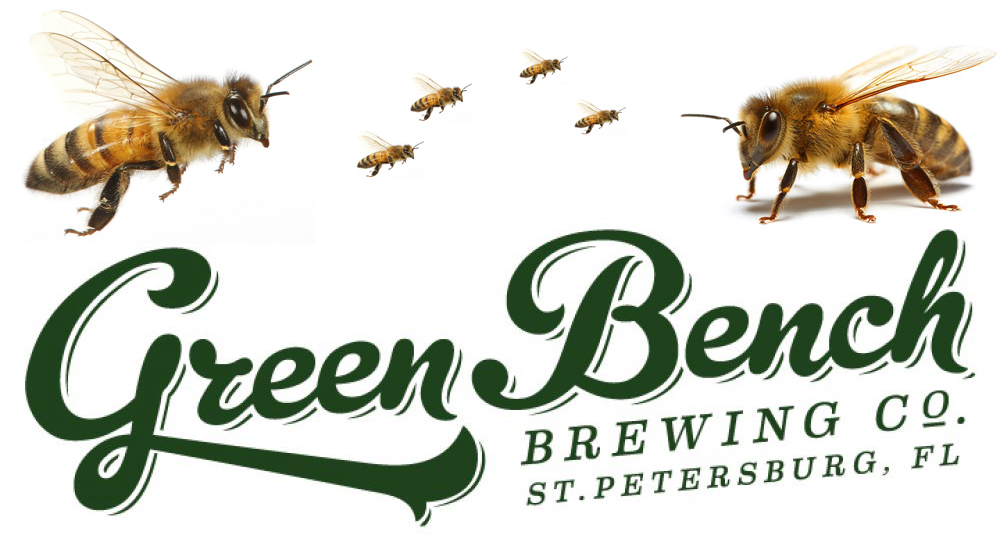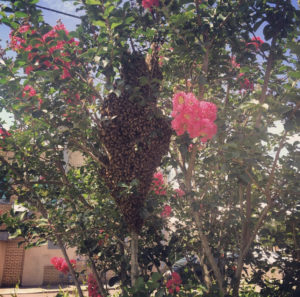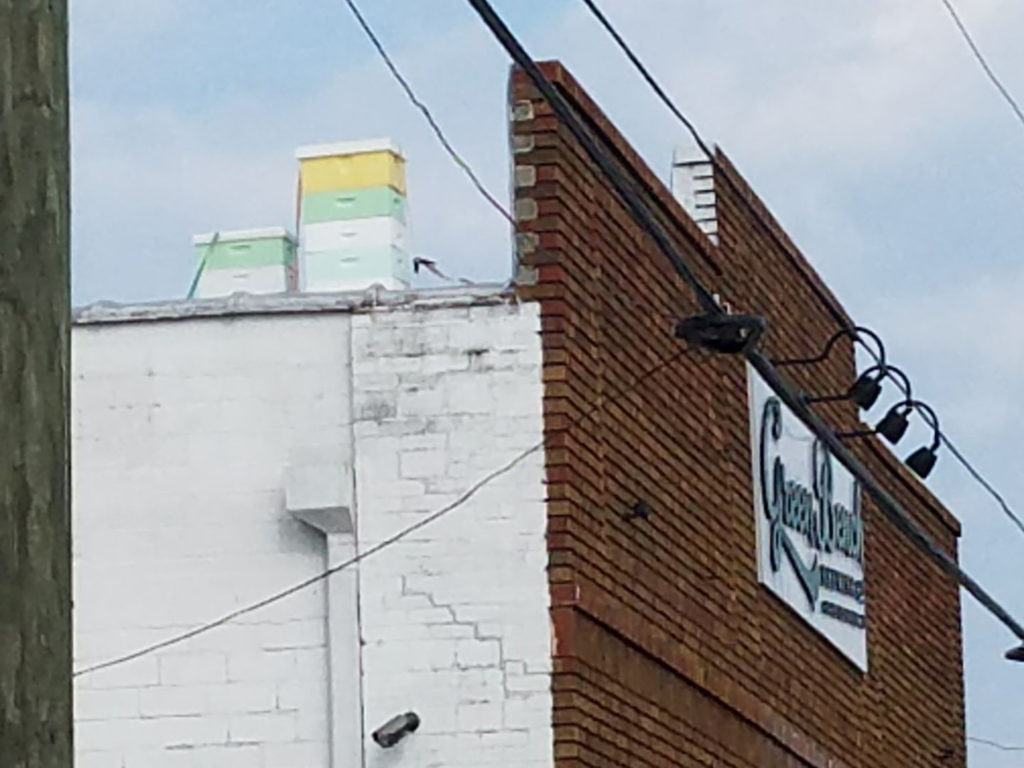Thrive
The buzz on Green Bench Brewing: Home-made honey

Green Bench Brewing Co. has 60,000 industrious, hardworking employees who make their own hours, play by their own rules and pay no withholding tax.
And they live right there on site.
They’re European honeybees, and they’ve been at Green Bench for two years, coming, going, raising their little bee families and – most significantly – producing between 15 and 20 gallons of honey annually. The bees reside in two heavily-weighted hives on the two-story roof of Green Bench’s property near Central Avenue in St. Pete.

Let it bee: Green Bench co-owner Steven Duffy on the roof (all photos provided by Green Bench Brewing).
“We were approached by a guy who’s really into urban beekeeping, to show how easy it is to maintain bees,” explains Valerie Niager, the craft brewery’s communications director. “We thought it was awesome, and we could also use fermented honey in small quantities for our mead and cider.”
Since wild honeybee populations are famously in decline, it made sense on an environmental level, too.
Still, it would take a whole lot more than 60,000 little buzzers to supply all the honey Green Bench requires for its meads, ciders and beer. More than 95 percent of it is orange blossom honey, brought in from a farm in Lakeland.
Beverages created with the rooftop honey are available only in the Green Bench tasting room, and in select bottles in limited runs.
Honeybees have a range of several miles. According to Luke Galloway, Green Bench’s official beekeeper, their insects are probably gathering nectar from nearby back yards, landing on local bottlebrush and palm, as well as the jasmine, rosemary and flowering plants in Green Bench’s sunny beer garden.
In 2017, great clouds of bees left the roof at once, and massed in great balls-of-bees on several trees in the beer garden. This is known as a swarm.
“The trees in the beer garden were covered in bees,” Niager recalls. “You could hear them at the end of the block, they’re so loud.”
The State of Florida’s Department of Agriculture frowns on allowing urban bees to swarm. Galloway was called in to assess the situation, and do something about it.
The beekeeper explains: “If their population’s growing faster than their home can hold, the queen is saying ‘We’re running out of space. Let’s take half the people with us and go to a new home.’ So they’ll find a spot outside the hive, send out some scouts and wait for somebody to say ‘Let’s go here next.’”
Galloway approached the swarm armed only with a cardboard box.

The ’17 swarm.
“When they swarm,” he says, “they’re not protecting anything – so when you see a ball of bees you can put your hand in it. They won’t sting you. It’s like sticking your hand in a fireplace and not getting burned. That kind of deal.”
Kids, don’t try this at home.
Once Galloway located the queen inside the ball, he merely shook the entire swarm into his box – every bee went willingly – and returned it to the rooftop hives.
Expansion of the hives may well happen in the near future.
“I didn’t realize how easy this would be,” Niager observes. “It’s such a hands-off thing. We do very little with them. Luke comes to check on them sporadically. We have some beekeeper suits, but we haven’t had a need for them yet.”
When he visits, Galloway has to schlep up to the roof via a two-story collapsible ladder, wearing his protective clothing and carrying all his heavy equipment. “That’s a lot of fun, I can tell you,” he laughs.
For Green Bench owners Steven Duffy and Nathan Stonecipher, this experiment in apiculture (that’s the scientific word for beekeeping) has been immeasurably worth it.
“I think our doing this for years – and it’s caused no issues – shows others in the community yes, you can do it,” Niager explains. “It’s so easy. We like supporting people who have specific interests, and this was a venue for us to do that.
“Who knows – in the future we might do more, because ideally we would love to have everything made here in-house. The hops, the fruit – all grown in St. Pete. Is that realistic within the next few years? We’ll see. But that’s the intention behind it all, to fuel someone else’s passion project.”








